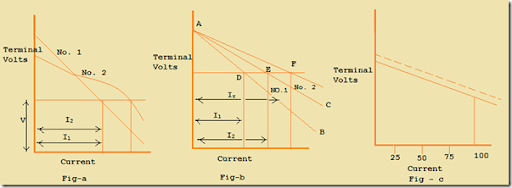
Shunt Generator Operation and Safe Separation
Shunt generators are best suited for stable simultaneous (parallel) operation due to their gently sloped voltage characteristics. Its function is that any tendency of a generator to demand more or less than its correct load share results in voltage changes in the system that directly counter this tendency, thus restoring the first division of the system. Once parameterized, they are theoretically controlled in parallel.
Likewise, to decommission one generator, its field is weakened, and the field of the other generator is pumped until the ammeter of the generator to be cleaned indicates zero. After that, your circuit breaker and switches are opened to take the generator out of service. This method of connecting and decommissioning a generator helps prevent sudden shocks or malfunctions in the inverter or the system itself.
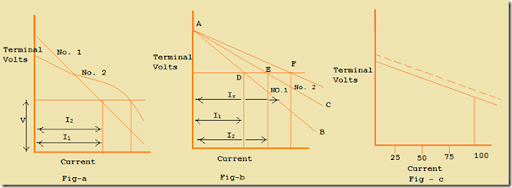
Limitations in the design of electrical machines
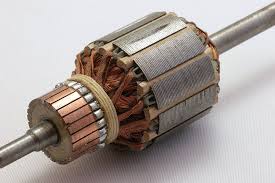
Classification of DC machines
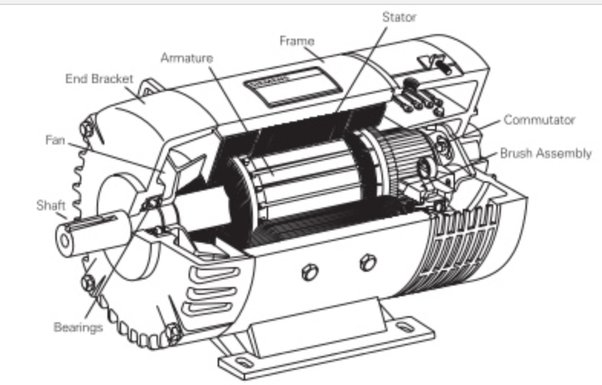
Here are some common classifications of DC machines
Based on field winding configuration
- In these machines the field winding is connected in parallel to the armature winding. They have relatively constant speed characteristics and are used in applications that require stable speed control, such as: For example, conveyor belts and industrial machines.
- The field winding is connected in series with the armature winding. Series machines have high starting torque and variable speed characteristics, making them suitable for applications such as electric traction and cranes.
- These machines combine the properties of parallel and in-line machines. They can be divided into cumulatively compound machines (adding the effects of parallel and series fields) and differentially compound machines (opposing the effects of parallel and series fields).
Based on armature winding connection
- In these machines, the armature windings are connected in parallel or “superimposed”. They are used in applications that require high currents and low voltage, such as: B. electric welding machines.
- Here the armature winding coils are connected in series or in wave form. They are suitable for high voltage and low current applications.
App-based
- DC generators convert mechanical energy into electrical energy. They are used in applications that require a stable DC voltage, such as battery charging and electroplating.
- DC motors convert electrical energy into mechanical energy. They are used in diverse applications such as industrial machines, electric vehicles and elevators.
Based on excitation system
- The field winding is excited by an external DC source independent of the machine.
- The field winding is excited by the machine armature current. This category includes shunt, series and compound machines.
Based on anchor core construction
- The anchor core has a smooth surface, which results in better mechanical stability.
- The armature core has slots to accommodate the armature winding, allowing better cooling and a larger surface area for winding positioning.
Load distribution
Load balancing of DC shunt generators is crucial for their operation, as it ensures efficient energy distribution and prevents overloads. Load balancing techniques help power systems maintain stability, improve reliability, and optimize generator performance.
Uneven load distribution can lead to several problems, including:
- If a power source has a disproportionately high gear ratio, it can cause overheating, reduced efficiency, and possible damage to the source.
- An underutilized energy source leads to inefficiency as part of the available capacity remains unused, resulting in wasted resources.
- If one power source is heavily loaded while others are lightly loaded, system reliability can be compromised, resulting in potential downtime or interruption.
Load balancing is essential in applications where consistent power supply is critical, such as data centers, hospitals, factories and large commercial operations. To achieve effective load distribution, several methods and control mechanisms are used:
- The droop control adjusts the speed or voltage of each generator depending on the size of the load. As the load increases, the power of each generator increases slightly to maintain a proportional share of the bag.
- In prime mover driven power generation systems such as turbines, governors control the speed of the prime movers to regulate generator output in response to load changes.
- Proper synchronization ensures that generators are connected to the grid with appropriate voltage, frequency and phase angles, allowing for continuous load distribution.
- These electronic devices monitor the load of each generator and adjust their excitation or output accordingly to maintain balance.
- Load distribution can be improved by allowing communication between generators so they can effectively coordinate load distribution.
- These systems use feedback from load sensors to adjust the output of each generator in real time, maintaining proportional sharing.
Load distribution methods
This article examines several load balancing methods, including parallel operation, droop control, and cross-current compensation.
Parallel operation
Parallel operation allows multiple DC shunt generators to work together, sharing the total load proportionally based on their ratings and characteristics. Generators can contribute their share of energy through appropriate synchronization and control mechanisms, maintaining voltage and frequency stability. Additionally, parallel operation allows for redundancy and provides backup power in case of generator failure or maintenance needs.
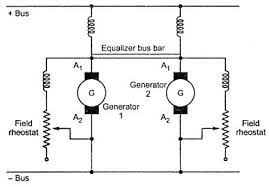
Fall control
Drop control is another effective load shading technique. The parallel opening of the generators regulates generator speed based on load fluctuations, implementing droop characteristics. This causes the generator to adjust its output to maintain the desired load distribution ratio. Drooping control allows for better distribution accuracy and stability, preventing one generator from carrying excessive load while others remain underutilized.
Cross current compensation
Cross current compensation is a technique for balancing load distribution between parallel DC shunt generators. By measuring the armature currents of each generator and adjusting the field excitation, cross-current compensation ensures that the load is distributed evenly regardless of generator characteristics or load fluctuations. This approach minimizes circulating currents and avoids imbalances in power distribution, resulting in better system performance.
However, certain factors must be taken into consideration when implementing load balancing techniques. Generator synchronization, voltage and frequency regulation, and protective relays are critical aspects that require careful attention. Furthermore, proper maintenance, regular inspections and testing are necessary to ensure optimal performance of generators and the load distribution system.
Conclusion
In summary, load balancing of DC shunt generators is a fundamental requirement for reliable and efficient power distribution in various applications. Power systems can utilize parallel operation, droop control, and cross-current compensation techniques to achieve effective load balancing and improve stability, reliability, and performance. By understanding the principles and considerations associated with load balancing, engineers and operators can design and operate power systems that meet the needs of modern electrical grids.

